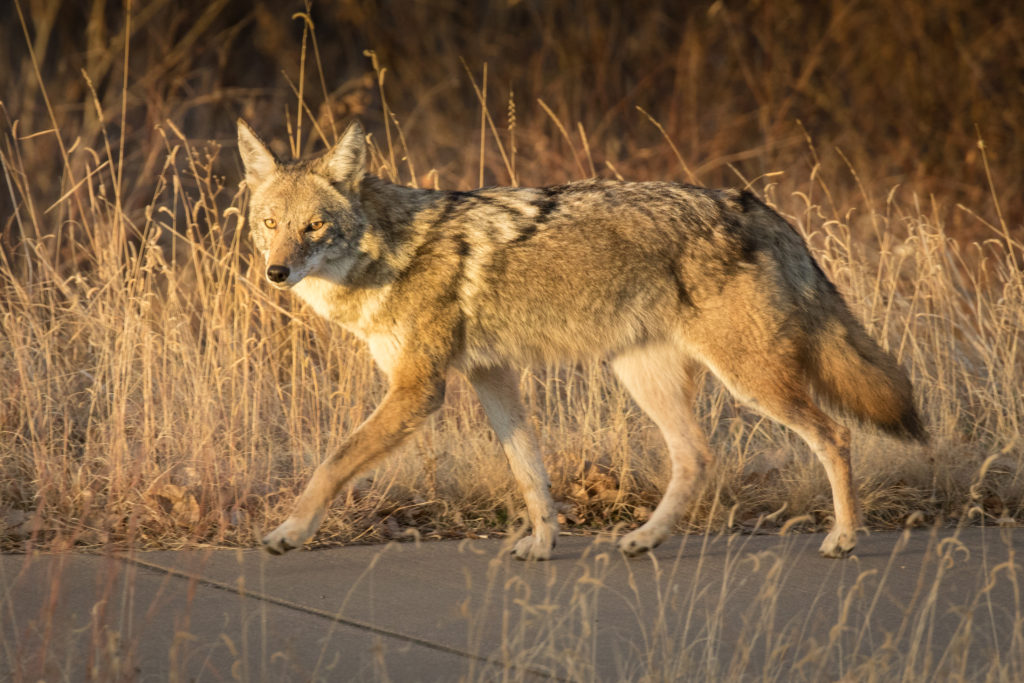July 29, 2021
The Case for a Coyote as the Cat Killer
The recent reports of deceased cats were certainly unsettling to me and everyone here at the OHS. There are persistent theories that the killer is human, but the OHS has come to believe that the evidence points to the perpetrator as a coyote or coyotes. Here is the case:
1. A veterinary pathologist from Guelph University concluded so.
The initial reports were particularly concerning, as the police reported they suspected a human predator. We were relieved to learn that the police were going to have a necropsy performed at the Kemptville campus of Guelph University. The veterinary pathologist performing the analysis concluded that the one cat had died as a result of a predator attack — most likely a coyote — and that the state of the other bodies were consistent with the same conclusion.
2. A Canadian research study concluded coyotes were responsible for cat deaths in very similar circumstances in Alberta.
Shortly after this, our own research turned up a recent Canadian study published in the Journal of Veterinary Pathology that mirrored our situation in Ottawa. In strikingly similar circumstances in Edmonton and St. Albert, the study found that:
“Among 53 carcasses examined in this study, a majority (68%) could be directly attributed to coyote predation as a cause of death. An additional 15% appeared to be scavenged by coyotes after either being hit by a car or suffering some other trauma. The remaining 17% included pet burials and partial carcasses that had insufficient tissue remaining to determine cause of death. In no case was there any clear evidence of nonaccidental injury by humans.. ..Thus, we conclude that coyote predation and scavenging were responsible for most, if not all, of the cases of dismembered cat remains discovered.”
Here is another quote from the study:
“Cat remains from these events are often brought to the attention of local veterinarians, who may have difficulty diagnosing the cause of death, and to animal control officers and/or police, who need to determine whether or not a crime occurred. In these situations, laymen often describe injuries to cats with phrases like “scalpel-like cuts” and “laser edges.” Once in the media, reports proliferate with ensuing speculation about possible human involvement in mutilating cats.”
3. Sadly, cat deaths are very common in this area.
The recent spate of cat killings may seem unusual. In fact, it’s not. Our friends at Ottawa Valley Lost Pet Network have had 690 cats found dead reported to them since January 2019. In the same period, 92 bodies have been brought to the OHS. Between the two, that’s almost one every day, and that surely doesn’t represent all the cats killed in the region.
4. Coyotes have become common in urban settings, including Ottawa.
Coyotes are frequently found in urban settings. I have seen several myself here in Hunt Club, and staff frequently report sightings. There have also been coyote attacks on humans in Riverside South.
5. The notes came late to the puzzle.
As to the notes left at the site of one of the bodies, I think it likely that someone is having a sick laugh at our expense and horror. Remember, no notes were found until the story had been well-covered in the media.
Given the facts available, we have concluded that the preponderance of the evidence points to a coyote attack. At the end of the day the cats perished nonetheless. It is deeply disturbing as they clearly suffered horrendous deaths.
The solution is the same in any case: cats should be kept safely indoors.
Bruce Roney
President & CEO

